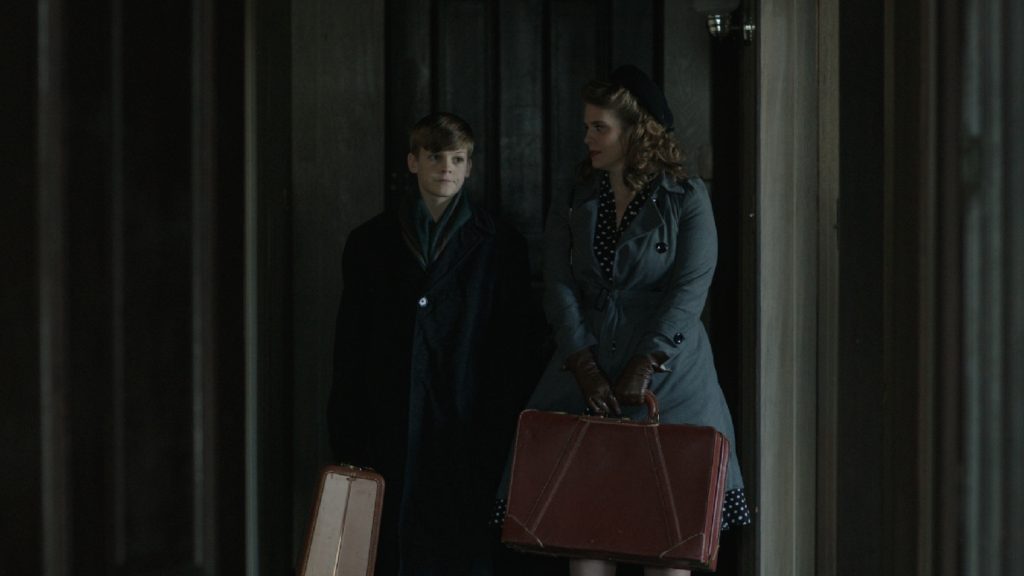It’s possible to under and over-deliver on suspense. In Alice Fades Away, the plight of a threatened woman is constantly undercut by a need to do both at once. In the present-day, Alice is living on a farm, running from her past, while flashbacks show Alice with her son and husband in blissful 1950s luxury. This juxtaposition naturally sparks tension: What happened to Alice and her family? The film promises answers, but for the majority of the runtime, any explanation is bogged down by a distinct lack of tension.
Great effort was put into the flashbacks’ soft, 16mm look, which exist in a bubble of calm, orderly oasis. Lighting is warmer, and the aspect ratio encloses the largely wordless scenes, bringing to mind montages in The Tree of Life. Key moments in the past are recalled as Alice experiences a traumatic moment in the present, such as a fight with her husband, or a lesson taught to her son. Using flashback to establish parallels is a fine method for developing tension, but by expanding the idea into flash forwards, the director hoards too much information, removing audience curiosity from the equation and replacing it with empty visual bait. Even with payoff, many of the peeks into the past and future end up imbalancing the narrative, splitting Alice between three different timelines that all reveal too little.
Beyond editing, writer/director Ryan Blisscan’t seem to write dialogue. Characters often grill one another, with one person feeling betrayed or caught while the other presses them for information. The villain’s torturing of a farm resident is exciting, if only because it’s a monologue from the intimidating bad guy, but in lower-stakes scenarios, dialogue is a mess. Mutilated animal corpses have appeared in the woods, and sensing Alice’s fear, a woman on the farm asks, “We’re not safe, are we?”, strongly suggesting that Alice’s answer will be yes. And it is, delivered on a platter to whomever isn’t grasping that there is something to fear in the woods that surround the farm.
Film Review: Black Bear (2020)
To its credit, Alice Fades Away resolves the cat-and-mouse game between Holden, the villain, and Alice, in a symbolic victory that grants Alice freedom from her past. In an escape attempt, Alice is immediately caught by Holden and dragged to the field where her car was last parked. Holden gets distracted, and as Alice reaches for the gun she stashed in the trunk, she fires one shot, hitting Holden in the chest. Rather than reach for the gun, Holden steps into the driver’s seat and looks at Alice in the rearview mirror. He steps out, retreats to the woods, and leaves Alice to make her escape.
Alice’s story ends as she drives away. She is now in control, moving on and away from the evil in the woods and the scars of her past. It’s brutal, and satisfying. The drama in this scene can feel a bit laboured, like Holden calmly walking away from Alice after sustaining a major injury, but it’s the exact kind of dialogue-free action the film needs. Why use words when a look can convey everything an audience needs to know?
Holden is beaten, not by someone stronger than him, but by Alice’s lucky break. There’s no dialogue to spell this out, and only one flashback appears, suggesting Alice may have left the gun in the trunk on purpose, expecting this moment. It hurts to know Bliss and the actors were capable of conveying such strong emotion, and it begs the question: Where was this philosophy before? Alice Fades Away could have been truly tense, but is so encumbered by dialogue and editing that it stalls before it can begin. There are bright spots in the themes and finale, but none of it is in harmony with the film’s tone, leaving the experience scattered, waterlogged: adrift.

